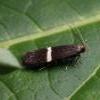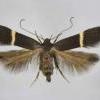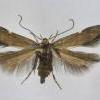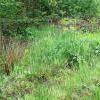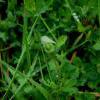35.003 Aproaerema larseniella Gozmany, 1957
Status and Distribution
Local, occasionally locally common, in southern and eastern England, the Midlands and south-east and eastern Wales. Very local in south-west England and the Channel Islands, rare in Yorkshire and Durham. Apparently absent from much of northern England, western and northern Wales, Scotland, Northern Ireland and Ireland.
Pierce and Metcalfe (1935) showed that Syncopacma ligulella (since 1957 named S. larseniella) and S. vorticella (now called S. cinctella) were valid species. However, prior to 1935, records of ligulella cannot, with any certainty, be applied to larseniella or cinctella. The name changes and lack of external identification features to separate these two species has led to frequent misidentifications, a problem still present, to some extent, even today. It appears safe to identify those bred from Lotus pedunculatus (greater bird's-foot-trefoil) as A. larseniella without the need for dissection, although A. taeniolella will still need to be excluded by checking the hindwing underside markings.
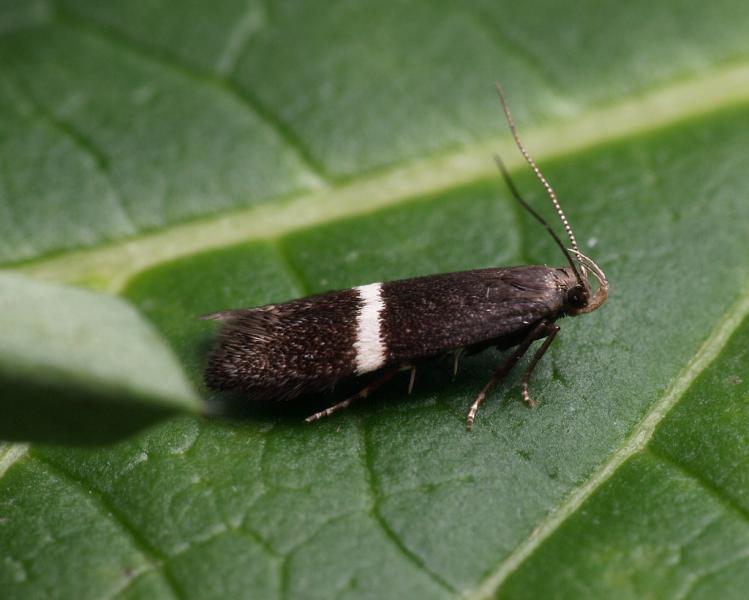
Provisional map
Pupa
Set Specimens
Habitat
Finding the Moth
Larva: found between spun leaves and shoots from April to June. Aproaerema taeniolella will, on rare occasions, also use Lotus pedunculatus.
Adult: can be swept from the foodplant, disturbed during the afternoon and will come readily to light.
Similar Species
There are six Aproaerema species that have the dark forewing and, to some extent or other, a whitish fascia - many are scarce and have very restricted distributions. The size of the moth together with the habitat and available larval foodplants will help to narrow down the options to some extent. Breeding to establish the association with a particular foodplant is useful and could add additional information on the range of foodplants utilised by members of this genus. There is some overlap in foodplant usage and if in doubt, bred specimens should also be dissected.
It has been suggested that the presence or absence of a curve to the white crossband can assist in identification of these species. This is not the case, as although A. larseniella normally has a straight line, both A. taeniolella and A. cinctella can have a straight or slightly inwardly curved fascia. This feature is therefore unsuitable on its own as an identification feature.
A. taeniolella usually has a whitish fascia on the forewing underside, with a whitish spot or broken line on the underside of the hindwing, features not present in other members of this genus. See photographs of A. taeniolella and A. larseniella forewing and hindwing undersides in 'Images' of the respective species.
For the time being it appears safe to say that if the moth is bred from greater bird's-foot-trefoil (so that A. taeniolella can be excluded) then it will be A. larseniella.
For more detailed discussion covering the Aproaerema species and their separation see under A. cinctella (Finding the Moth / Similar Species).
Single brooded from June to early August.

